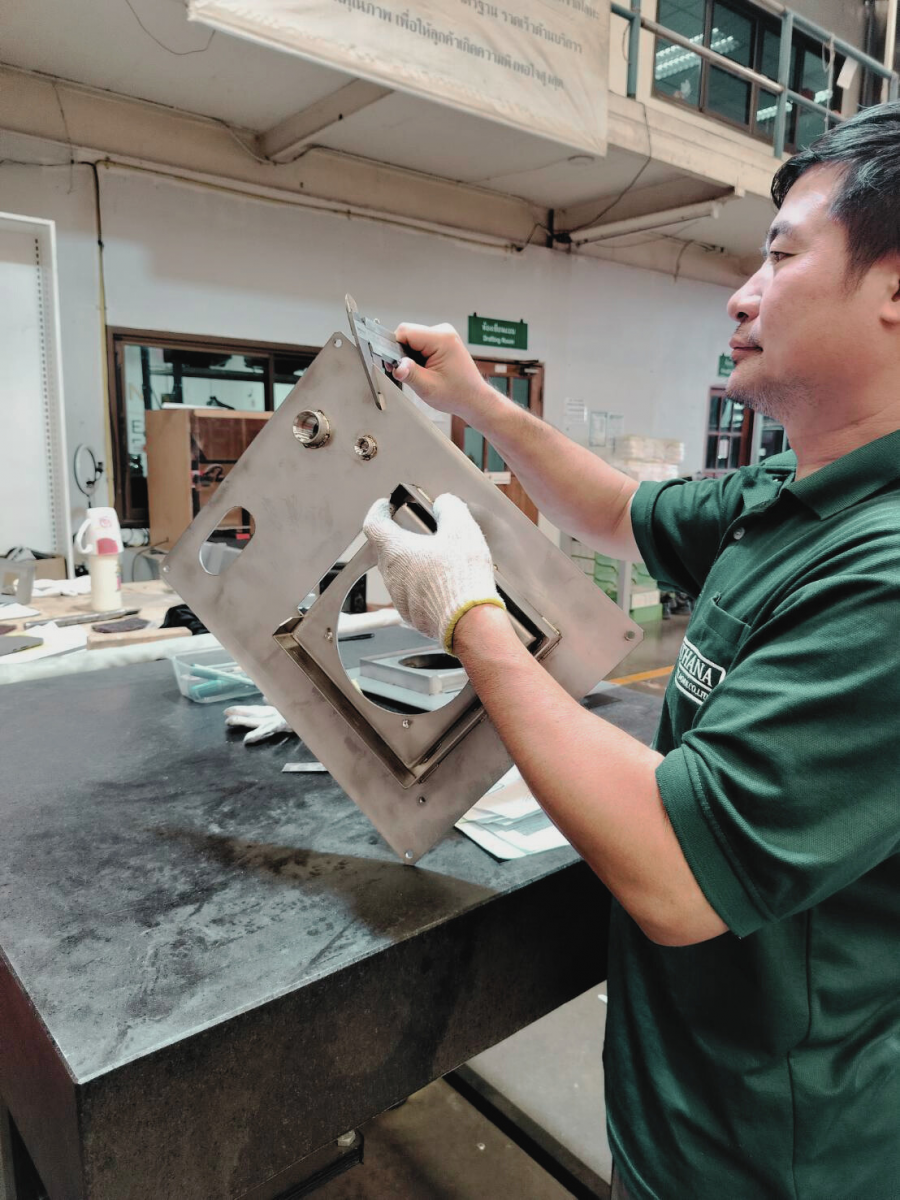Quality Control (QC) Process in Manufacturing
The Quality Control (QC) process is a crucial step to ensure that all manufactured parts meet the required standards and customer expectations. In metal fabrication, QC is divided according to the production sequence, from laser cutting, preparation, bending, to assembly and welding.
1. Laser Cutting Process
- ✔ Material Specification & Thickness: Verify the material type and thickness according to the design
- ✔ Hole Inspection: Randomly measure holes to ensure they meet the design specifications
- ✔ External Dimensions: Check width and length of the part
- ✔ General Condition: Surface must be free of scratches, edges smooth, no burrs or leftover cutting debris
2. Preparation Process
- ✔ Thread Tap Inspection: Test screws to verify threads are correct
- ✔ Burring Check: Ensure there are no remaining burrs
- ✔ Special Drilling: Check holes, countersinks, counterbores, etc.
- ✔ Deburring: Edges must be smooth and safe to handle
- ✔ General Condition: Inspect surface scratches and smoothness
3. Bending Process
- ✔ Bend Dimensions: Check wing size and bending angle
- ✔ Bend Accuracy: Ensure bends are in correct position and direction
- ✔ General Condition: Inspect for cracks, warping, or surface marks
4. Assembly & Welding Process
- ✔ Weld Dimensions: Check length and position of welds
- ✔ Assembly Parts: Verify nuts, studs, and sockets match the drawing
- ✔ Surface Finishing: Ensure surfaces are smooth and free from burn marks
- ✔ General Condition: Check straightness, squareness, and overall weld quality
Note: QC inspection results should be recorded at each step, with photos of the inspected points, for accuracy and traceability.
Summary:
Systematic quality control helps reduce errors and increase customer satisfaction. Every part that passes detailed QC forms the foundation of trust in professional metal fabrication.

.png)
.png)
.png)
.png)
.png)
.png)
.png)
